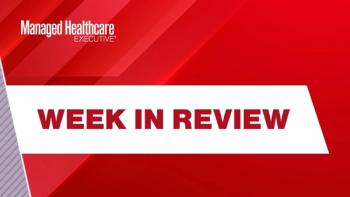
- MHE December 2019
- Volume 29
- Issue 12
Vision Care: Front-Line to Whole Body Health
A routine eye exam can detect and diagnose more than 25 different medical conditions.
We are seeing a new era in healthcare. Gone are the days of the all-knowing doctor and the passive patient. Consumerism is driving changes in medicine, with Americans demanding higher-quality care, better cost management, and a greater focus on preventive medicine.
How can you use these trends to your advantage? One option is to make routine vision care work harder for you.
Annual eye exams are preventive health
Few people realize that a routine eye exam can detect and diagnose more than 25 different medical conditions-including those that are most feared by Americans, such as stroke risk, Alzheimer disease, diabetes, and heart disease. Better yet, an eye exam often identifies the condition long before the patient even knows they have the disease.
Take a minute to think about that. A routine vision exam is noninvasive; takes 60 minutes or less; often occurs at convenient times of the day; and can be used as screening for diseases like diabetes and heart disease.
One example is a study from Population Health Management, which found that a routine eye exam detected signs of chronic disease long before any other health professional had noted the condition. Specifically, the researchers found signs of high cholesterol 65% of the time, high blood pressure 30% of the time, and diabetes 20% of the time.
Related:
This was seen in another study, this time from the International Journal of Ophthalmology, where researchers reported that 21% of patients tested during an eye exam had high blood pressure, yet two-thirds (67%) of them had no idea they had elevated levels.
It’s the same story with Alzheimer disease and stroke, as well. A study from JAMA Ophthalmology found that eye doctors can detect small alterations in retinal blood vessels that are known to be a biomarker for Alzheimer disease years before it begins to affect memory. Similarly, a study from the journal Stroke found that retinal microvascular measurements can predict risk of stroke.
In other words, one can learn a lot about whole body health from a routine eye exam before there are symptoms of bodily damage. Now that’s the kind of high-quality, low-cost preventive care Americans are demanding.
Early prevention equals cost savings with routine vision
Speaking of cost savings, let’s consider for a moment the fact that many of the very diseases detected in an eye exam are the most costly.
Stroke-the leading cause of long-term disability in the United States-alone costs the United States an average of $34 billion each year, according to a report from the American Heart Association. But that’s a drop in the bucket compared with diabetes, which the American Diabetes Association estimates totals $327 billion annually, with $237 billion coming from direct medical costs and $90 billion coming from decreased productivity.
Yet, employers considering routine benefits often give ancillary benefits, like vision, little attention. The good news is that some health plans administering Medicare and Medicaid plans are ahead of the trend and are turning their attention to vision plans to increase their members’ access to preventive screening. In fact, some are considering telemedicine and mobile units for vision screening to address barriers to access.
Routine vision is a low-cost benefit, which is why it is sometimes overlooked. But savvy health plans are paying attention-because it is also a low-cost screening method that helps identify members at risk for costly medical conditions-and measuring the positive impact on health outcomes.
Eye health costs on the rise
While routine vision may be relatively low cost, medical care associated with eye and vision diseases are not. Eye disease costs are on the rise, with ophthalmology and optometry ranking as the second highest cost specialty for Medicare expenditures. Specifically, eye-related costs drive 7.2% of total Medicare expenses ($102 billion) and in fact, eye care costs have been growing at a faster rate than total Medicare costs-three times as fast to be exact.
Health plans may not be aware of this trend, but for those of us in managed vision care, we are watching it constantly, often taking the temperature on these costs three times a day.
Routine vision, preventative care, lower costs
Managed vision benefits provide preventive care, support whole body health, improve outcomes, and manage costs-precisely what Americans want from their healthcare.
It’s time we all start paying attention.
Kirk Rothrock is chief executive officer of Versant Health, a next-generation managed vision care company dedicated to helping members enjoy the wonders of sight through healthy eyes and vision. He has nearly three decades of experience leading healthcare services companies, with a proven track record of growing organizations and enabling better access to care. Previous roles span the continuum of care, including positions with leading provider and payer organizations in both the public and private sectors
Articles in this issue
about 6 years ago
Managed Care State of the Industry 2019about 6 years ago
Eight Trends Expected to Shape Managed Care Pharmacy in 2020about 6 years ago
Oncology Clinical Pathways: A Growing Trend for Value-Based Careabout 6 years ago
Finding the Most Effective Healthcare Appsabout 6 years ago
Managing Pain Drugs Requires a Delicate Balanceabout 6 years ago
How Employment Impacts Healthcareabout 6 years ago
8 Policy Changes to Expect in 2020Newsletter
Get the latest industry news, event updates, and more from Managed healthcare Executive.

















































